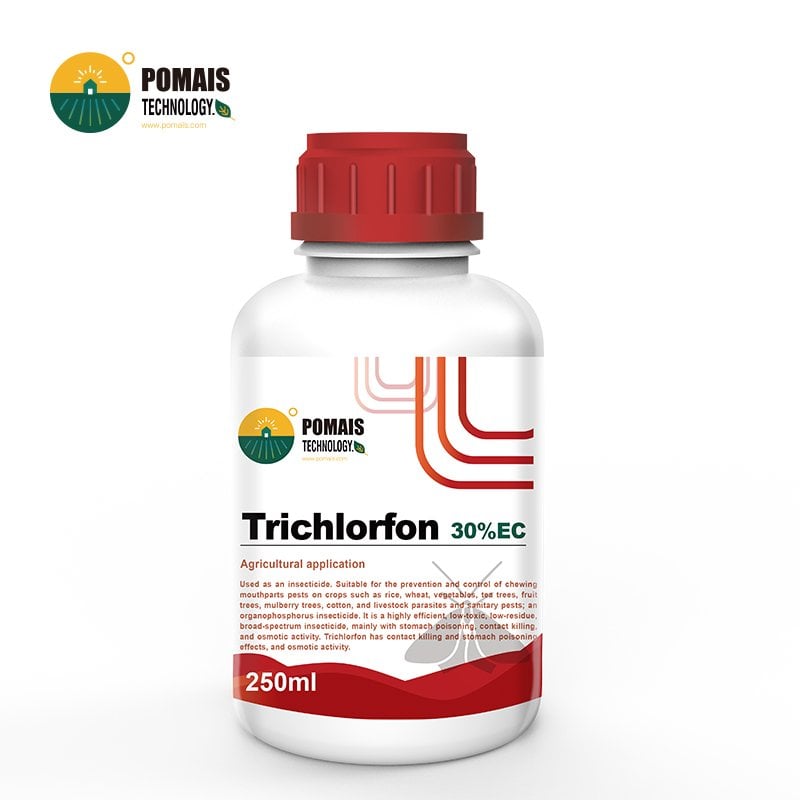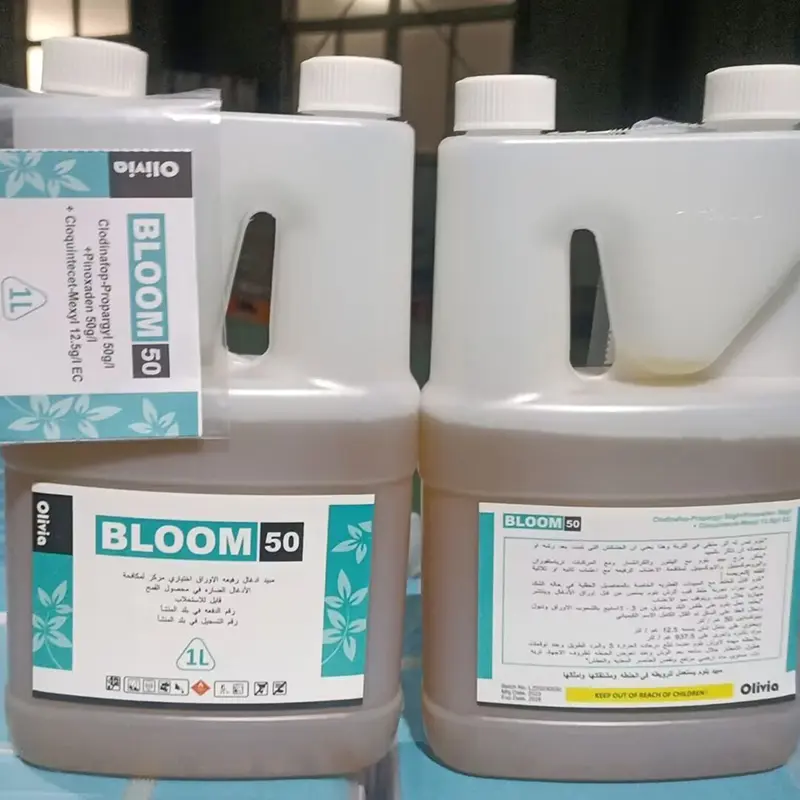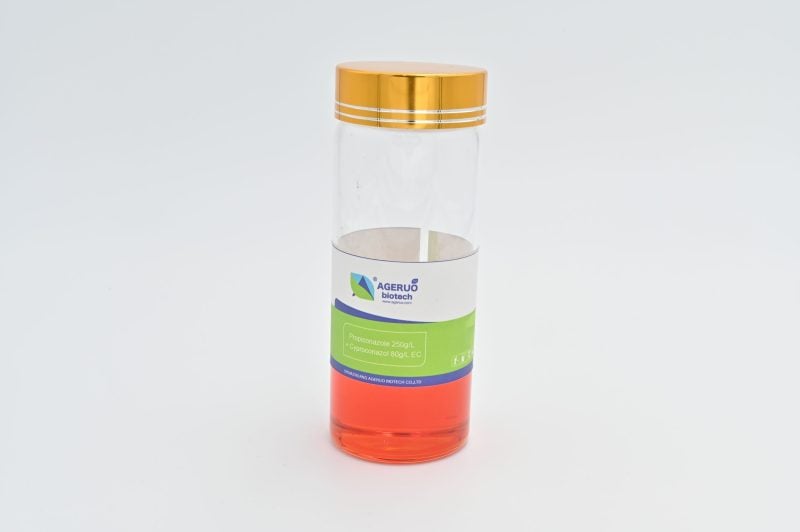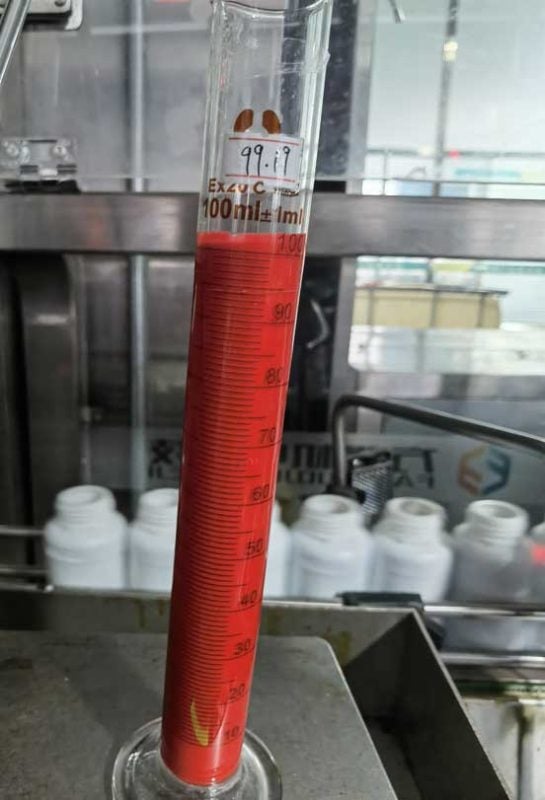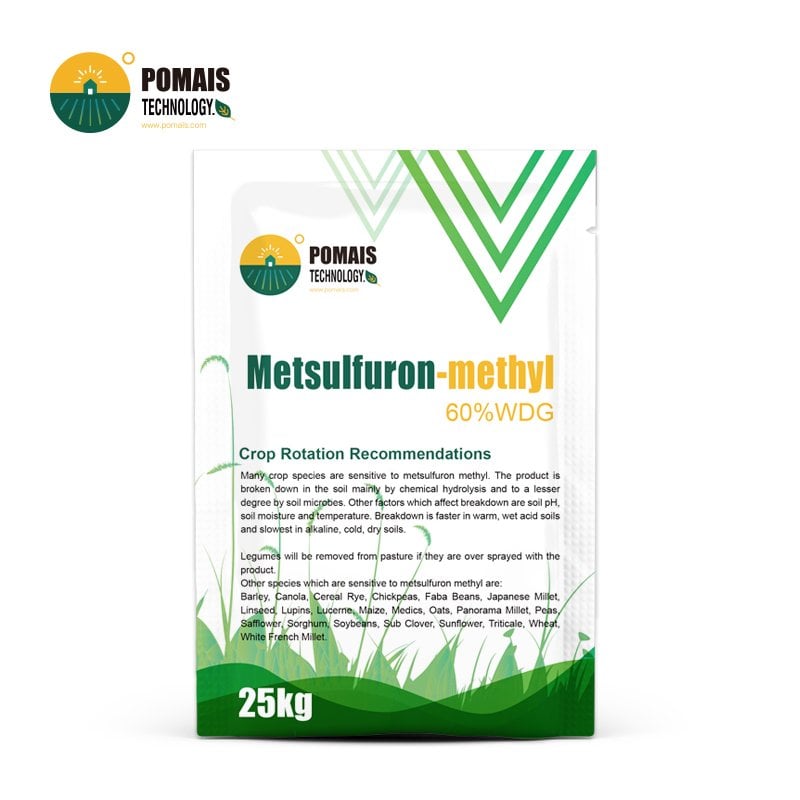Trichlorfon Insecticide | Effective Grub Killer and Pest Control Products
Trichlorfon is a versatile and effective organophosphorus insecticide known for its broad-spectrum, fast-acting, low-toxic properties. It primarily works through stomach poisoning with additional contact killing effects, making it highly suitable for controlling a wide variety of pests across agricultural crops, livestock, and sanitary environments. Trichlorfon is particularly effective against chewing mouthparts pests and is also used to combat external parasites in animals.
- Designed for Professional Buyers & Bulk Orders
- This product is available for business purchase and large-scale distribution.
- We support custom packaging, labeling, and formulation to meet your market needs.
- Let’s build your brand together.

About Trichlorfon Insecticide | Effective Grub Killer and Pest Control Products
About Trichlorfon Insecticide | Effective Grub Killer and Pest Control Products
| Active Ingredient | Trichlorfon |
| Chemical Formula | C4H8Cl3O4P |
| Molecular Weight | 257.45 |
| CAS Number | 52-68-6 |
| Formulations Available | 30% EC, 80% SP, 90% SP, 97% TC |
| Mixed Formulations | – Trichlorfon 30% + Profenofos 10% EC – Trichlorfon 20% + Dimethoate 20% EC |
| Mode of Action | Stomach poisoning, contact killing, osmotic activity |
| Target Pests | Chewing pests, underground pests, livestock parasites, sanitary pests |
| Target Crops | Rice, Vegetables, Fruit Trees, Livestock |
| Dosage | Rice/Vegetables: 30 liters/mu Fruit Trees: 30 liters/mu Livestock: 1-3% solution for spraying |
| Application Method | Foliar spray, Soil incorporation, Spray on livestock |
| Advantages | Broad-spectrum control, versatile use in crops, livestock, and fish farming, fast-acting with low residue |
| Packaging | Customized packaging and label options available |
Trichlorfon Insecticide
Trichlorfon, widely known commercially as Dipterex insecticide, is a highly effective solution for managing pests, particularly grubs in lawns and agricultural fields. Available in multiple convenient formulations, including trichlorfon granules and liquid concentrates, it delivers fast-acting, reliable pest elimination. Its reputation as an efficient grub killer makes it a preferred choice for homeowners, turf managers, and farmers seeking powerful pest control solutions.
Trichlorfon is a highly versatile insecticide that provides fast-acting, broad-spectrum pest control for both agricultural crops and livestock. Its multi-mode action of stomach poisoning, contact killing, and osmotic activity makes it an essential tool for controlling chewing mouthparts pests, external parasites, and underground pests. Its low toxicity and low residue make it suitable for use in integrated pest management programs.
For more information on available formulations, customized packaging, or technical guidance, please feel free to contact us. We are committed to helping you achieve the best results with Trichlorfon in your pest control strategies.
Advantages of Trichlorfon
- Broad-Spectrum Control:
- Trichlorfon is effective against a wide variety of pests, including chewing mouthparts pests, underground pests, external parasites of livestock, and sanitary pests such as flies, mosquitoes, and fleas.
- Versatile Use:
- It is suitable for use in crops, livestock, fish farming, and sanitary environments, providing a multi-purpose pest control solution.
- Fast-Acting with Low Residue:
- Trichlorfon works quickly to eliminate pests, with minimal residue left on crops, making it ideal for integrated pest management (IPM) programs where residue management is critical.
- Control of Livestock Parasites:
- Trichlorfon is used to control external parasites in livestock such as lice, scabies, ticks, and flies on cattle, sheep, pigs, and poultry. This makes it valuable in both agriculture and animal husbandry.
- Prevention of Fish Diseases:
- It is also effective in controlling parasites in fish, making it valuable for aquaculture use.
Mode of Action
Trichlorfon interferes with the nervous system of insects by inhibiting cholinesterase, leading to continuous nerve excitation and eventual death of the insect. The compound has strong stomach poisoning effects and a certain degree of contact toxicity, making it especially effective on pests with chewing mouthparts. Its systemic nature also allows it to penetrate plant tissues, providing residual protection against pests.
- Stomach Poisoning: Insects ingest the treated plant material, leading to disruption of their nervous system.
- Contact Action: Kills pests upon direct contact with the insecticide.
- Osmotic Activity: Provides deeper penetration into plant tissues, enhancing pest control effectiveness.
Target Pests
Trichlorfon effectively controls:
- Lawn grubs
- Beetle larvae
- Soil-borne insects
- Various agricultural pests
Applications and Dosage
Trichlorfon can be used on a wide range of crops and pests, as well as for livestock pest control. Below are some general application guidelines:
| Formulation | Target Crop | Target Pest | Dosage | Application Method |
|---|---|---|---|---|
| 30% EC | Rice, Vegetables, Fruit Trees | Chewing pests, Leafrollers | 30 liters/mu | Foliar spray |
| 80% SP | Rice, Wheat, Vegetables | Cabbage worm, Bridgeworm | 30 liters/mu | Foliar spray |
| 90% SP | Fruit Trees | Underground pests | 30 liters/mu | Spray or soil incorporation |
| 97% TC | Livestock | External parasites (lice, ticks) | 1-3% solution for spraying | Spray |
- Timing: Apply during the early larval stage of the pest for best results. For underground pest control, flush with water to ensure proper penetration into the soil.
- Aquaculture: Use Trichlorfon in water environments for controlling fish parasites, taking care to monitor pH levels to avoid excessive conversion into dichlorvos under alkaline conditions.
Mixed Formulations for Enhanced Performance
- Trichlorfon 30% + Profenofos 10% EC:
- This combination enhances the contact and systemic action of Trichlorfon with Profenofos, a highly effective organophosphate insecticide. It provides comprehensive control of pests like chewing insects and mites on crops like cotton and vegetables.
- Trichlorfon 20% + Dimethoate 20% EC:
- This formulation improves performance against sucking pests and chewing pests, as Dimethoate offers excellent systemic action, making it ideal for use on crops like cotton, rice, and wheat.
Special Uses in Livestock and Fish Farming
- Livestock Pest Control: Trichlorfon is highly effective against lice, scabies, horse stomach flies, and other external parasites in livestock. A 1-3% solution can be sprayed directly on livestock to control pests like body lice and ticks. It also helps in reducing pests in surrounding environments like flies, mosquitoes, and cockroaches.
- Fish Farming: In aquaculture, Trichlorfon is used to control internal and external parasites like trematodes, nematodes, and cladocerans in fish. It provides effective protection for fish fry and eggs, but careful monitoring of water pH is required to avoid the toxic effects of dichlorvos formation in alkaline environments.
Application Instructions
Trichlorfon Granules:
- Evenly spread granules at a recommended rate of 2.5 kg per 100 square meters.
- Thoroughly water the area after application to ensure maximum absorption into the soil.
- Best application periods: Late spring or early autumn.
Trichlorfon Spray:
- Mix and apply as directed on product label.
- Spray uniformly on affected areas, ensuring thorough coverage.
- Optimal application timing: Early morning or late afternoon to prevent rapid evaporation.
Safety & Environmental Precautions
- Always wear appropriate protective gear including gloves, masks, and protective eyewear.
- Keep product out of reach of children and pets.
- Avoid contamination of water sources and food supplies.
- Dispose of empty containers responsibly following local guidelines.
Frequently Asked Questions (FAQs)
Q: Is Trichlorfon effective for grub control?
- A: Absolutely. Trichlorfon granules and sprays are highly effective in eliminating lawn grubs rapidly and efficiently.
Q: What is the difference between Trichlorfon and Dipterex insecticide?
- A: Trichlorfon is the active ingredient, whereas Dipterex is the commercial brand name for products containing Trichlorfon.
| Active Ingredient | Trichlorfon |
| Chemical Formula | C4H8Cl3O4P |
| Molecular Weight | 257.45 |
| CAS Number | 52-68-6 |
| Formulations Available | 30% EC, 80% SP, 90% SP, 97% TC |
| Mixed Formulations | – Trichlorfon 30% + Profenofos 10% EC – Trichlorfon 20% + Dimethoate 20% EC |
| Mode of Action | Stomach poisoning, contact killing, osmotic activity |
| Target Pests | Chewing pests, underground pests, livestock parasites, sanitary pests |
| Target Crops | Rice, Vegetables, Fruit Trees, Livestock |
| Dosage | Rice/Vegetables: 30 liters/mu Fruit Trees: 30 liters/mu Livestock: 1-3% solution for spraying |
| Application Method | Foliar spray, Soil incorporation, Spray on livestock |
| Advantages | Broad-spectrum control, versatile use in crops, livestock, and fish farming, fast-acting with low residue |
| Packaging | Customized packaging and label options available |
Trichlorfon Insecticide
Trichlorfon, widely known commercially as Dipterex insecticide, is a highly effective solution for managing pests, particularly grubs in lawns and agricultural fields. Available in multiple convenient formulations, including trichlorfon granules and liquid concentrates, it delivers fast-acting, reliable pest elimination. Its reputation as an efficient grub killer makes it a preferred choice for homeowners, turf managers, and farmers seeking powerful pest control solutions.
Trichlorfon is a highly versatile insecticide that provides fast-acting, broad-spectrum pest control for both agricultural crops and livestock. Its multi-mode action of stomach poisoning, contact killing, and osmotic activity makes it an essential tool for controlling chewing mouthparts pests, external parasites, and underground pests. Its low toxicity and low residue make it suitable for use in integrated pest management programs.
For more information on available formulations, customized packaging, or technical guidance, please feel free to contact us. We are committed to helping you achieve the best results with Trichlorfon in your pest control strategies.
Advantages of Trichlorfon
- Broad-Spectrum Control:
- Trichlorfon is effective against a wide variety of pests, including chewing mouthparts pests, underground pests, external parasites of livestock, and sanitary pests such as flies, mosquitoes, and fleas.
- Versatile Use:
- It is suitable for use in crops, livestock, fish farming, and sanitary environments, providing a multi-purpose pest control solution.
- Fast-Acting with Low Residue:
- Trichlorfon works quickly to eliminate pests, with minimal residue left on crops, making it ideal for integrated pest management (IPM) programs where residue management is critical.
- Control of Livestock Parasites:
- Trichlorfon is used to control external parasites in livestock such as lice, scabies, ticks, and flies on cattle, sheep, pigs, and poultry. This makes it valuable in both agriculture and animal husbandry.
- Prevention of Fish Diseases:
- It is also effective in controlling parasites in fish, making it valuable for aquaculture use.
Mode of Action
Trichlorfon interferes with the nervous system of insects by inhibiting cholinesterase, leading to continuous nerve excitation and eventual death of the insect. The compound has strong stomach poisoning effects and a certain degree of contact toxicity, making it especially effective on pests with chewing mouthparts. Its systemic nature also allows it to penetrate plant tissues, providing residual protection against pests.
- Stomach Poisoning: Insects ingest the treated plant material, leading to disruption of their nervous system.
- Contact Action: Kills pests upon direct contact with the insecticide.
- Osmotic Activity: Provides deeper penetration into plant tissues, enhancing pest control effectiveness.
Target Pests
Trichlorfon effectively controls:
- Lawn grubs
- Beetle larvae
- Soil-borne insects
- Various agricultural pests
Applications and Dosage
Trichlorfon can be used on a wide range of crops and pests, as well as for livestock pest control. Below are some general application guidelines:
| Formulation | Target Crop | Target Pest | Dosage | Application Method |
|---|---|---|---|---|
| 30% EC | Rice, Vegetables, Fruit Trees | Chewing pests, Leafrollers | 30 liters/mu | Foliar spray |
| 80% SP | Rice, Wheat, Vegetables | Cabbage worm, Bridgeworm | 30 liters/mu | Foliar spray |
| 90% SP | Fruit Trees | Underground pests | 30 liters/mu | Spray or soil incorporation |
| 97% TC | Livestock | External parasites (lice, ticks) | 1-3% solution for spraying | Spray |
- Timing: Apply during the early larval stage of the pest for best results. For underground pest control, flush with water to ensure proper penetration into the soil.
- Aquaculture: Use Trichlorfon in water environments for controlling fish parasites, taking care to monitor pH levels to avoid excessive conversion into dichlorvos under alkaline conditions.
Mixed Formulations for Enhanced Performance
- Trichlorfon 30% + Profenofos 10% EC:
- This combination enhances the contact and systemic action of Trichlorfon with Profenofos, a highly effective organophosphate insecticide. It provides comprehensive control of pests like chewing insects and mites on crops like cotton and vegetables.
- Trichlorfon 20% + Dimethoate 20% EC:
- This formulation improves performance against sucking pests and chewing pests, as Dimethoate offers excellent systemic action, making it ideal for use on crops like cotton, rice, and wheat.
Special Uses in Livestock and Fish Farming
- Livestock Pest Control: Trichlorfon is highly effective against lice, scabies, horse stomach flies, and other external parasites in livestock. A 1-3% solution can be sprayed directly on livestock to control pests like body lice and ticks. It also helps in reducing pests in surrounding environments like flies, mosquitoes, and cockroaches.
- Fish Farming: In aquaculture, Trichlorfon is used to control internal and external parasites like trematodes, nematodes, and cladocerans in fish. It provides effective protection for fish fry and eggs, but careful monitoring of water pH is required to avoid the toxic effects of dichlorvos formation in alkaline environments.
Application Instructions
Trichlorfon Granules:
- Evenly spread granules at a recommended rate of 2.5 kg per 100 square meters.
- Thoroughly water the area after application to ensure maximum absorption into the soil.
- Best application periods: Late spring or early autumn.
Trichlorfon Spray:
- Mix and apply as directed on product label.
- Spray uniformly on affected areas, ensuring thorough coverage.
- Optimal application timing: Early morning or late afternoon to prevent rapid evaporation.
Safety & Environmental Precautions
- Always wear appropriate protective gear including gloves, masks, and protective eyewear.
- Keep product out of reach of children and pets.
- Avoid contamination of water sources and food supplies.
- Dispose of empty containers responsibly following local guidelines.
Frequently Asked Questions (FAQs)
Q: Is Trichlorfon effective for grub control?
- A: Absolutely. Trichlorfon granules and sprays are highly effective in eliminating lawn grubs rapidly and efficiently.
Q: What is the difference between Trichlorfon and Dipterex insecticide?
- A: Trichlorfon is the active ingredient, whereas Dipterex is the commercial brand name for products containing Trichlorfon.
Related Products
Latest News


